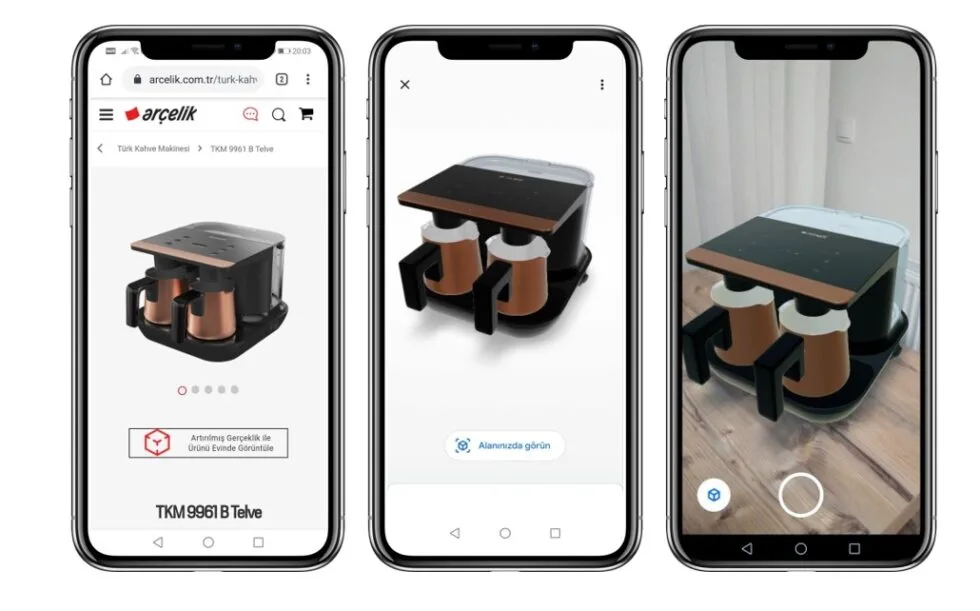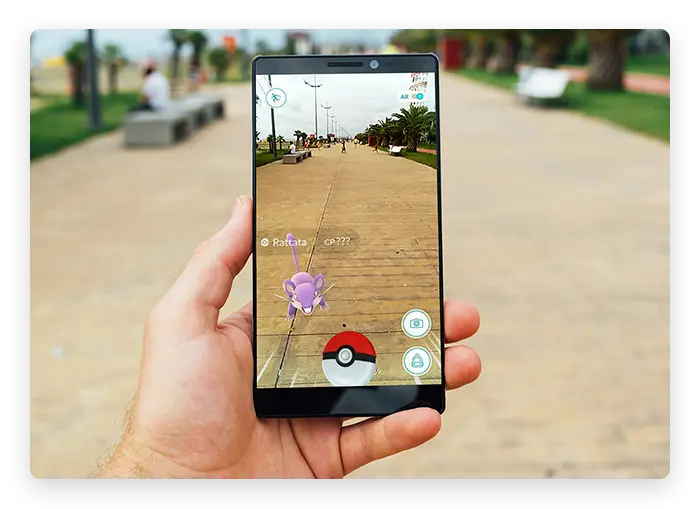
Have you ever tried putting AR objects in the real world or playing AR games like Pokemon Go? If you have, I hope you enjoyed it. If not, you should give it a try. You might be curious to know that there are two ways to use AR: WebAR & AppAR. WebAR is accessed through the web, while AppAR is accessed through an app. In this blog, we will compare WebAR and AppAR, discuss their advantages and disadvantages, and help you choose which one is better for you.
What is WebAR?

Web-Based Augmented Reality(WebAR) provides users with AR experiences through web browsers, without the need to download any apps.
Core technologies behind WebAR:-
- WebXR API
- Three.js
- Marker-Based(QR or image) and Markerless AR(Device sensors) Technologies
- Camera and Sensor Access via WebRTC
- Cloud-based AR
What is AppAR?

App-Based Augmented Reality(AppAR) is a technology that provides users with AR experiences through mobile Applications.
Core technologies behind AppAR:-
- SLAM(Simultaneous Localization and Mapping)
- AR Development Frameworks(ARKit, ARCore and Vuforia)
- Depth Sensing Technologies(LiDAR and Time-of-Flight sensors)
- Computer Vision Algorithms
- 3D Rendering Engines(Unity and Unreal Engine)
Differences Between WebAR vs AppAR
| WebAR | AppAR |
| It is directly accessible from web browsers without the need for installation of apps. | It requires downloading and installing the dedicated app. |
| Has limited hardware(GPU) access, leading to lower-quality graphics. | Has full hardware Access, hence providing high-quality graphics. |
| Can’t support advanced features like environmental mapping, persistent AR objects, and complex animations. | Can leverage all the advanced features like persistent AR objects, real-time occlusion, markerless AR, and all other complex algorithms. |
| Easier and quicker to develop useing technologies like WebGL, WebXR, and HTML5. | Requires specialized SDKs like ARKit (iOS) and ARCore (Android) and mobile app development skills. |
| It works on all modern smartphones and browsers. | It works on specific devices and platforms |
| This has a faster battery drain, as it runs in a web browser. | This has better Battery & Memory management. |
Advantages & Disadvantages
AppAR
Advantages
- High Performance: It optimizes device hardware for smooth, immersive AR with LiDAR and depth sensing.
- Battery & Memory Management: Uses SDKs(ARKit, ARCore) to optimize hardware, battery & Memory for efficient AR experiences.
- Advanced Analysis: Allows developers to analyze user interactions to enhance features and customize experiences.
Disadvantages
- Development & Mantaince Cost: Specialized Skills, resources & Regular updates are required to create and maintain AppAR
- Less Accessibility & Scalability: Requires advanced hardware, marketing and app installation, limiting its accessibility and Scalability .
- Data & Privacy Concerns: AppAR’s use of personal data raises privacy concerns and legal risks under laws like GDPR and CCPA.
WebAR
Advantages
- Compatibility: It’s compatible with over 3 billion devices, including both android and iOS devices.
- Cost-Effective Development: As it uses standard technologies, its development and maintenance costs are low.
- Instant Interaction: It allows users to experience AR directly with the help of web browsers without downloading any specific apps for it.
Disadvantages
- Lack of Advanced features: WebAR can’t support advanced features like accurate gesture recognition, and object tracking.
- Battery Drainage: It drains mobile’s battery faster by using camera sensors and processing data.
- Performance Limitations: It can’t access all the hardware leading to limited performance and lower quality graphics.
Future
WebAR
- With the evolvement of the 5G network all around, there are high chances of WebAR becoming more efficient than now. All the heavy and large assets that take time to load and reduce performance will then load at a faster rate.
- WebAR can integrate with IoT (Internet of Things) for applications like smart appliances, and monitoring systems. This could help us connect the digital world and the physical world in the future offering us an immersive experience.
- WebAR will also help us to have persistent AR objects. This means that if we leave virtual objects over time, then also they would maintain their position in the real world. Through WebAR, multiple users can interact with each other by experiencing the same AR simultaneously.
AppAR
- AppAR will support new medical tools like virtual surgery training, quick diagnosis, and patient care. It will also help industries see complicated machines and guide assembly lines. Additionally, it can show virtual tours of properties with features that let you customize.
- AppAR will stay on top in AR gaming by providing great games like Pokémon GO with better graphics, multiplayer options, and lasting worlds. With cloud-based AR and 5G, AppAR games will allow players on different devices to play together smoothly.
- It will change online shopping by allowing customers to try on clothes, accessories, or makeup more accurately. Apps will serve as personal shopping helpers, giving size suggestions, comparing products, and offering virtual advice.
Conclusion
There is no final answer to the WebAR vs AppAR debate, as neither one is better than the other. Both have their own advantages and disadvantages. Choosing the right one depends on your use case. But one thing is for certain: as Augmented Reality technology continues to evolve, WebAR and AppAR will become an integral part of our lives.


